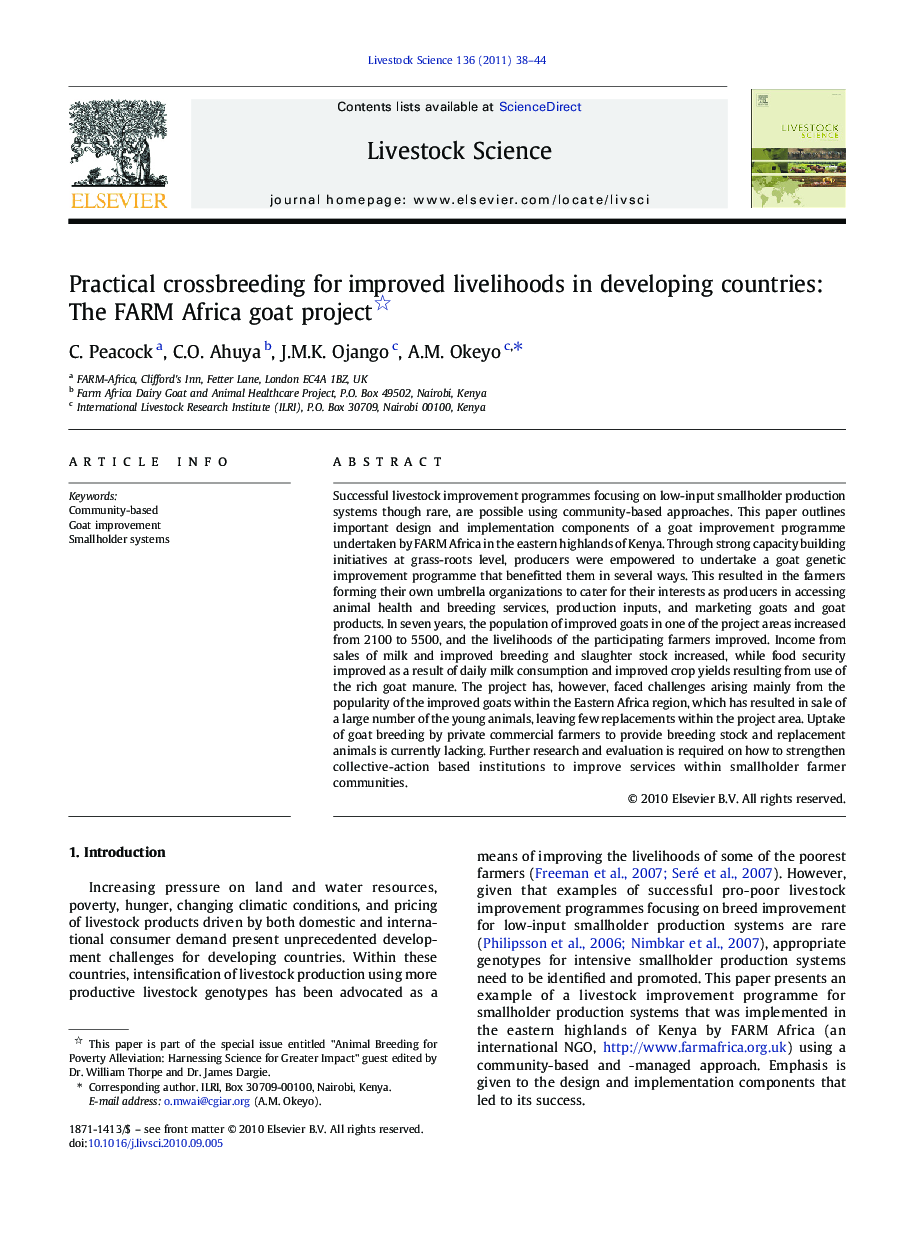| Article ID | Journal | Published Year | Pages | File Type |
|---|---|---|---|---|
| 2447520 | Livestock Science | 2011 | 7 Pages |
Successful livestock improvement programmes focusing on low-input smallholder production systems though rare, are possible using community-based approaches. This paper outlines important design and implementation components of a goat improvement programme undertaken by FARM Africa in the eastern highlands of Kenya. Through strong capacity building initiatives at grass-roots level, producers were empowered to undertake a goat genetic improvement programme that benefitted them in several ways. This resulted in the farmers forming their own umbrella organizations to cater for their interests as producers in accessing animal health and breeding services, production inputs, and marketing goats and goat products. In seven years, the population of improved goats in one of the project areas increased from 2100 to 5500, and the livelihoods of the participating farmers improved. Income from sales of milk and improved breeding and slaughter stock increased, while food security improved as a result of daily milk consumption and improved crop yields resulting from use of the rich goat manure. The project has, however, faced challenges arising mainly from the popularity of the improved goats within the Eastern Africa region, which has resulted in sale of a large number of the young animals, leaving few replacements within the project area. Uptake of goat breeding by private commercial farmers to provide breeding stock and replacement animals is currently lacking. Further research and evaluation is required on how to strengthen collective-action based institutions to improve services within smallholder farmer communities.
